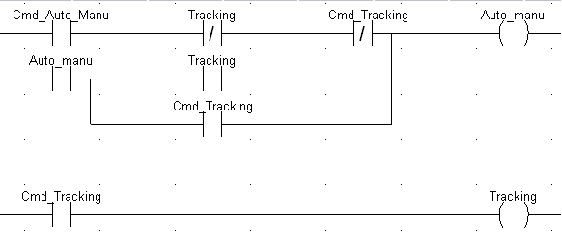Before autotuning, you must first enter step function duration, performance and amplitude of the desired command.
If these parameters have too small or too large values, autotuning will not be executed.
The loop controller can be in automatic or manual mode before autotuning is executed. Sending a command starts the autotuning process. During the autotuning process (2.5 times the step function period), the function controls the loop controller output. This output cannot be modified.
The autotuning function automatically sets loop controller coefficients. The diagnostics word shows any possible faults detected during autotuning. When autotuning is complete, the loop controller assumes its operating mode prior to the autotuning operation.
If the loop controller is in automatic mode, it uses the new parameters. The Previous adjustment command sets to the previous parameters.
This operating mode is used to force a process control loop’s digital outputs. This is often used when closing an open loop to prevent a bump occurring in the command units.
Tracking mode is also used in back-up architectures composed of one active and one passive PLC. Here it makes the passive PLC outputs identical to the active PLC outputs.
Tracking mode uses a parameter (%MF address) and a command (send command):
-
Switching to Tracking mode is done by sending a command. The command is refused if the address containing the Tracking value is not entered.
-
If the order is sent, the process control loop output value is replaced by the Tracking output value. The internal variables are regularly initialized with the output value.
-
If the order is given to abort Tracking mode, the loop controller returns to its previous operating mode without output bump.
Tracking mode has higher priority than automatic, manual and autotuning modes.
When the Tracking mode is activated or a Tracking mode request is launched, it is impossible to execute any command (automatic, manual, and autotuning).
You have to ensure the right bit programming maintaining the commands bits while Tracking mode is On.
Tracking mode is not available for all loop controllers (characteristics none). For example, the ON OFF loop controller does not have this mode.
Tracking mode is global on cascade and auto selector loops.
This example shows, in a Ladder section, how to manage the Auto/Manual mode and the Tracking mode.
